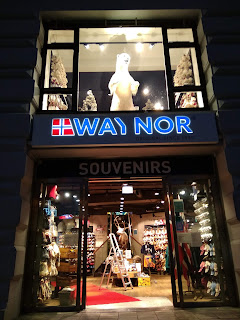so I've got, ehm, a beard, and, eh, Viking horns
- Rachel Riley, 8 out of 10 cats does countdown S17E02
It is common for people who come from outside Oslo to say that Oslo is not really Norway. It is also common, I was told my a colleague before beginning my new job, that to people in Oslo, everything outside the city is abroad. Such a dynamic is, I believe, quite typical between capitals and the rest of the country. Perhaps the dynamic is particularly strong in Norway because we do not have great cities, and because so many parts of the country remain districts despite the ongoing urbanisation.
Considering this dynamic, it is always a curious experience to saunter about in the cityscape, and to explore the various attempts at metropolitanism that can be found in the city, and also to see the many examples of why those of us who do come from the district struggle to see Oslo as part of our country. For instance, there are the neo-classical facades of public buildings, the neo-romanticism of the villas in the city's posher quarters, or the cutting-edge modern of the opera house, and the various shops and restaurants that allow the residents to sample different corners of the world in their everyday life. These are all good things, each in their own way, and there are aspects about the city that I have very much come to enjoy even after only two months of residence. But every once in a while I am reminded that Oslo tries to be more Norway than the rest of Norway - that when communicating to tourists and exploiting the various preconceptions that non-Norwegians have about the country, things tend to go a bit awry.
This Thursday I was in town in the late afternoon to get something to eat. As I made my way through some of the more crowded streets close to various sights and popular tourist spots, I noticed that one of the shops was offering a selection of stereotypical Viking helmets, the ones that you often see either used by football fans at the stadium, or by children dressing up. Even though I do not specialise in Viking history, I am, as I believe most medievalists are, often plagued by this recurring trope of medievalism, as it is both widespread and impossible to root out, no matter how often experts will say that the Vikings did not have horns on their helmets. But the tourist industry knows very well that this is what foreigners expect to find in Norway, and this is what they are given.
As much as I see the logic behind such displays, and as much as I know that this catering to prejudice and expectation has little to do with, and cannot be countered by, facts and reality, there is something slightly carnivalesque about such shops and such assemblages of elements that have nothing to do with Oslo. And this carnivalesque sensation is exactly one of those reasons why I, as a Norwegian in Oslo, feel like I am in another country altogether.


Ingen kommentarer:
Legg inn en kommentar